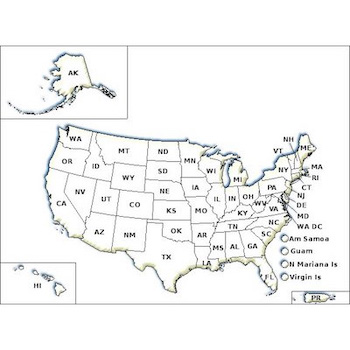Spider mites are common parasites on many different crops and houseplants. Spider mites are commonly found on the underside of leaves where they suck on plants. When plants are infested with spider mites, the leaves may turn yellow and fall off. If a plant appears affected, check the underside of the leaves for mites or their webbing. As adults, spider mites have 8 legs and are very difficult to see with the naked eye. One may need a magnifying glass to see the tiny mites. Spider mites are not insects but belong to a group called arachnids, which includes ticks, spiders, and scorpions.
There are many species of spider mites and one species may be more common in your area than another. Consider contacting your local Cooperative Extension Service for help identifying a pest.
Control tips:
- Spider mites like dusty, dry conditions. Make sure that plants have enough water.
- Diseased and unhealthy plants are more susceptible to spider mites and other pests.
- Forceful spraying of plants with water may help to control low-level infestations of spider mites.
- Spider mites have natural enemies, including predatory mites, which may be purchased as a form of biological control.
- If you decide to use a pesticide, always read and follow label directions.
If you have questions about this, or any pesticide-related topic, please call NPIC at 800-858-7378 (8:00am - 12:00pm PST), or email us at npic@ace.orst.edu.
Last updated February 12, 2025
- Identify your
pest before moving forward. Aphids,
thrips and other pests may look similar. Spider mites often make
webbing on the underside of leaves.
- Make sure plants are getting enough water. Spider mites thrive on
thirsty plants.
- Spray plants with a forceful stream of water. Make sure to spray the
bottom of leaves.
- Discard houseplants that are heavily infested.
- Attract naturally occurring predators. Predatory mites can also be purchased and released.
- Many pesticide products can make the problem worse, especially during
hot weather.
- Insecticidal soap and plant extracts have been recommended, if
needed. They can have a lower impact on beneficial insects and mites
than other pesticides.
- If you choose to use a pesticide, read the label before you buy. Try a lower toxicity
product first.
- If you have a pesticide product in mind, have your label handy and click here for information about that product.
These images are graciously allowed to be used by NPIC by Bugwood.org. Images included in the Bugwood Network Image Archives (ForestryImages.org, IPMImages.org, Invasive.org, and InsectImages.org) are made available under a Creative Commons license. Individual photographers retain all rights to images included in the archive.
Through its county agents, the Cooperative Extension Service gives individuals access to the resources at land-grant universities across the nation. These universities are centers for research in many subjects, including entomology (the study of insects) and agriculture. Each county within the United States has an Extension office, which is staffed with agents who work closely with university-based Extension specialists to deliver answers to your questions about gardening, agriculture, and pest control.



